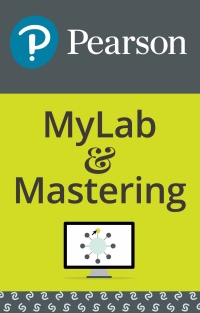Question
You have just been hired as a financial analyst for Lydex Company, a manufacturer of safety helmets. Your boss has asked you to perform a
You have just been hired as a financial analyst for Lydex Company, a manufacturer of safety helmets. Your boss has asked you to perform a comprehensive analysis of the companys financial statements, including comparing Lydexs performance to its major competitors. The companys financial statements for the last two years are as follows:



Required: 1. You decide first to assess the companys performance in terms of debt management and profitability. Compute the following for both this year and last year:
a. The times interest earned ratio.
b. The debt-to-equity ratio.
c. The gross margin percentage.
d. The return on total assets. (Total assets at the beginning of last year were $12,960,000.)
e. The return on equity. (Stockholders equity at the beginning of last year totaled $9,048,000. There has been no change in common stock over the last two years.)
f. Is the companys financial leverage positive or negative? Explain.
2. You decide next to assess the companys stock market performance. Assume that Lydexs stock price at the end of this year is $72 per share and that at the end of last year it was $40. For both this year and last year, compute:
a. The earnings per share.
b. The dividend yield ratio.
c. The dividend payout ratio.
d. The price-earnings ratio. How do investors regard Lydex Company as compared to other companies in the industry? Explain.
e. The book value per share of common stock. Does the difference between market value per share and book value per share suggest that the stock at its current price is a bargain? Explain.
3. You decide, finally, to assess the companys liquidity and asset management. For both this year and last year, compute:
a. Working capital.
b. The current ratio.
c. The acid-test ratio.
d. The average collection period. (The accounts receivable at the beginning of last year totaled $1,560,000.)
e. The average sale period. (The inventory at the beginning of last year totaled $1,920,000.)
f. The operating cycle.
g. The total asset turnover. (The total assets at the beginning of last year totaled $12,960,000.)
4. Prepare a brief memo that summarizes how Lydex is performing relative to its competitors.
Lydex Company Comparative Balance Sheet This Year Last Year Assets Current assets: Cash Marketable securities Accounts receivable, net Inventory Prepaid expenses Total current assets Plant and equipment, net $ 960,000 0 2,700,000 3,900,000 240,000 7,800,000 9,300,000 $17,100,000 $ 1,260,000 300,000 1,800,000 2,400,000 180,000 5,940,000 8,940,000 $14,880,000 Total assets $ 3,900,000 3,600,000 7,500,000 $ 2,760,000 3,000,000 5,760,000 Liabilities and Stockholders' Equity Liabilities: Current liabilities. Note payable, 10% Total liabilities Stockholders' equity: Common stock, $78 par value Retained earnings Total stockholders' equity Total liabilities and stockholders' equity. 7,800,000 1,800,000 9,600,000 $17,100,000 7,800,000 1,320,000 9,120,000 $14,880,000 Lydex Company Comparative Income Statement and Reconciliation This Year Last Year Sales (all on account) Cost of goods sold Gross margin. Selling and administrative expenses Net operating income Interest expense Net income before taxes Income taxes (30%) Net income Common dividends Net income retained Beginning retained earnings Ending retained earnings $15,750,000 12,600,000 3,150,000 1,590,000 1,560,000 360,000 1,200,000 360,000 840,000 360,000 480,000 1,320,000 $ 1,800,000 $12,480,000 9,900,000 2,580,000 1,560,000 1,020,000 300,000 720,000 216,000 504,000 252,000 252,000 1,068,000 $ 1,320,000 To begin your assignment you gather the following financial data and ratios that are typical of companies in Lydex Company's industry: Current ratio Acid-test ratio Average collection period Average sale period .. Return on assets Debt-to-equity ratio Times interest earned ratio Price-earnings ratio 2.3 1.2 30 days 60 days 9.5% 0.65 5.7 10Step by Step Solution
There are 3 Steps involved in it
Step: 1

Get Instant Access to Expert-Tailored Solutions
See step-by-step solutions with expert insights and AI powered tools for academic success
Step: 2

Step: 3

Ace Your Homework with AI
Get the answers you need in no time with our AI-driven, step-by-step assistance
Get Started


